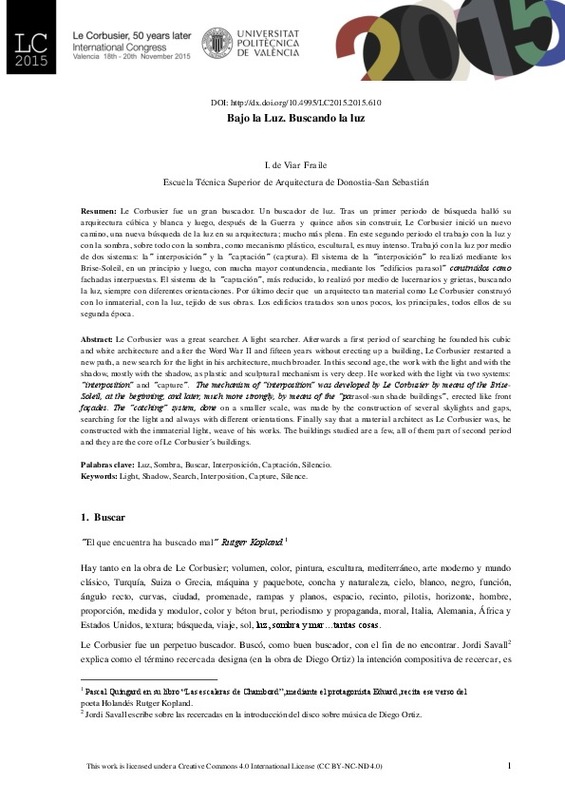JavaScript is disabled for your browser. Some features of this site may not work without it.
Buscar en RiuNet
Listar
Mi cuenta
Estadísticas
Ayuda RiuNet
Admin. UPV
Bajo la Luz. Buscando la luz
Mostrar el registro completo del ítem
Viar Fraile, I. (2016). Bajo la Luz. Buscando la luz. En LE CORBUSIER. 50 AÑOS DESPUÉS. Editorial Universitat Politècnica de València. 2275-2294. https://doi.org/10.4995/LC2015.2015.610
Por favor, use este identificador para citar o enlazar este ítem: http://hdl.handle.net/10251/86891
Ficheros en el ítem
Metadatos del ítem
| Título: | Bajo la Luz. Buscando la luz | |
| Autor: | Viar Fraile, Iñigo | |
| Fecha difusión: |
|
|
| Resumen: |
[EN] Le Corbusier was a great searcher. A light searcher. Afterwards a first period of searching he founded his cubic
and white architecture and after the Word War II and fifteen years without erecting up a building, Le ...[+]
[ES] Le Corbusier fue un gran buscador. Un buscador de luz. Tras un primer periodo de búsqueda halló su
arquitectura cúbica y blanca y luego, después de la Guerra y quince años sin construir, Le Corbusier inició un ...[+]
|
|
| Palabras clave: |
|
|
| Derechos de uso: | Reconocimiento - No comercial - Sin obra derivada (by-nc-nd) | |
| ISBN: |
|
|
| Fuente: |
|
|
| DOI: |
|
|
| Editorial: |
|
|
| Versión del editor: | http://ocs.editorial.upv.es/index.php/LC2015/LC2015/paper/view/610 | |
| Título del congreso: |
|
|
| Lugar del congreso: |
|
|
| Fecha congreso: |
|
|
| Tipo: |
|








